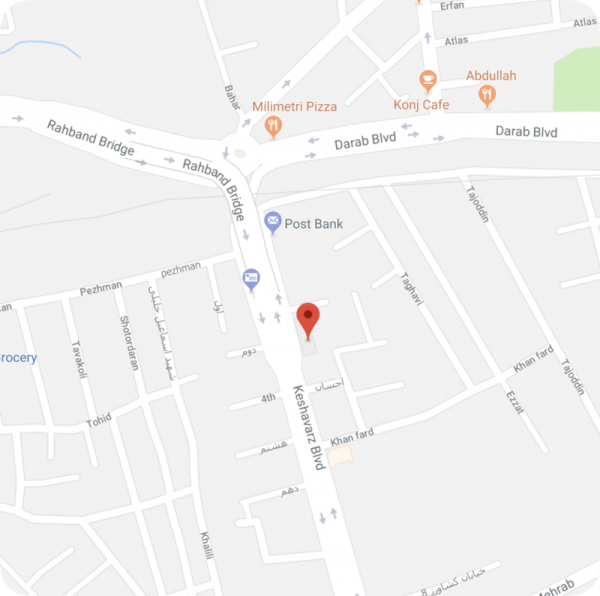NIPT or NIFTY test – Non-invasive prenatal diagnosis of Down syndrome and chromosomal abnormalities (cell-free DNA)
cell free DNA testorNon Invasive Prenatal Testing = NIPT
To diagnose anoploid disorders of chromosomes 21, 18 and 13 and sex chromosomes
Updated: 08/08/1399
Perform theCell Free DNA orNIPT TestsUnder the license of the company Premaitha ENGLAND
Today, using the Illumina and Ion Torrent platforms, the fetal chromosomal abnormalities in the mother’s blood can be examined. Each of these two platforms has certain advantages and disadvantages, but various documents and studies conducted around the world show that both platforms have the ability to identify chromosomal abnormalities through NGS and the accuracy of both platforms. The form is acceptable. The Illumina platform is an older platform and the resulting data is large, so testing with this method is time consuming. The new Ion Torrent platform uses another technology that evaluates the ratio of fetal to maternal DNA in the shortest possible time by sequencing the entire genome. This new technology has CE-IVD certification, which includes consumer kits and software. All analyzes related to this technology are performed on the Manchester server in the UK and the results are available in PDF format. This eliminates operator errors and personal tastes in data analysis. It should be noted that today Illumina company intends to use Premaitha kits under a contract. The introduction of this modern technology and the acquisition of its knowledge, makes it possible to provide services to clients with high accuracy and precision with the least possible cost and time. So far, Fajr Medical Genetics Laboratory and other reputable centers in the country have used this technology to examine countless patients in recent years, and the results obtained prove the claim that this technology has a very high accuracy.
Basic Basics of Free Cell Testing DNA
For the first time in 1997, free DNA in the maternal circulation of embryonic origin (cffDNA) was considered. Placental trophoblast cells are the source of cffDNA, and cffDNA enters the mother’s bloodstream following the scaling of placental cells and makes up about 13-3% of the total cell-free maternal DNA, which is an increase of 10 to 20% in the third trimester of pregnancy. Finds. Research has shown that cffDNA appears in the mother’s bloodstream in the seventh week of pregnancy and disappears from her bloodstream immediately after birth (2 hours after delivery) and is not detectable in the mother’s bloodstream. The length of embryonic DNA fragments is much shorter than that of maternal DNA and is about 200-300 bp (nucleotides), and based on this, methods of differentiating or differentiating cffDNA from cell free maternal DNA were developed. In addition to the differences between embryonic and maternal DNA, there are differences in the epigenetic regions of cffDNA from cell free maternal DNA. Due to the importance of differentiating cffDNA from the high content of cell free maternal DNA, highly advanced molecular techniques are used.
Studies have shown that the DNA examined in this method is not fetal DNA but paired DNA. According to the findings of gamet embryology, within 2 days after fertilization and egg formation, the eggs begin their journey through the fallopian tube to the uterus, which is made possible by the activity of the tubular wall muscles. . At the same time, it repeatedly divides its egg to form a set of cells (blastomers) called the morula. The dividing cells continue to divide through the egg-carrying tube, doubling in number every 12 hours. When the above cell complex reaches the uterus, it contains hundreds of cells. After 6 to 12 days (average 9 days), this set of cells reaches the uterus and begins implantation in the endometrial layer and begins to divide. In the first cell divisions, a series of different cells are formed that have different functions in the future:
- A series of cells make up the embryo.
- A series of cells will form a pair in the future and are called cytotrophoblasts.
- A series of cells, in the form of an anchor, connect the fetus and placenta to the mother’s uterine wall, which are called syncytiotrophoblast cells.
So virtually all of the cffDNA found in the mother’s blood is actually from placental cells, not the fetus, and it’s better to call it cell-free placental DNA. For this reason, when there is placental mosaicism (confined placental mosaicism: When chromosome triplets are seen in some cells that make up the placenta, while other cells, including normal embryonic cells, cause a false-positive result, we need amniocentesis to confirm the diagnosis.
Although cffDNA may be distinct from cell-free placental DNA, in most cases the results are very good, while it is important to note the conceptual differences between the two terms. This is why, although this test is highly accurate when the test result is positive, it does not have enough power to make decisions without performing diagnostic tests such as amniocentesis.
Important points and recommendationsACOG And the Society of Maternal and Fetal Medicine
- The Cell-Free Fetal DNA test is not diagnostic and is not a substitute for CVS and amniocentesis and is considered a screening test.
- The diagnostic power of this test for trisomy 21 is ٪ 99 (false positive less than 0.5%).
- Its detection power is 97-98% for trisomy 18 and 80-79% for trisomy 13 (false positive less than 1%).
- A patient with a positive test should be referred for genetic counseling and diagnostic tests to confirm the test result.
- Although a negative test result is usually of high diagnostic value, a negative result does not mean 100% assurance of fetal Down syndrome.
Candidates for testing
- Women 35 years or older
- Have a positive screening test, including first, second, integrated or sequential screening tests
- Ultrasound results show an increased risk of aneuploidy disorders.
- Previous history of trisomies and chromosomal abnormalities in family or close relatives
- Parental balanced Robertsonian translocation, which increases the risk of trisomy 13 and 21 in the fetus.
- Single or twin pregnant women. Pregnant women with twins and above should not be recommended as this test has not been adequately evaluated in the low-risk group of women with twins and above.
- This test is unable to detect forms of mosaicism, partial chromosome aneuploidy, translocation, or maternal aneuploidy.
- If a structural abnormality is observed on fetal ultrasound, the patient should be referred directly for invasive diagnostic tests.
- A family history should be taken before the test to determine if other screening or diagnostic tests are needed.
Reasons for seeing false positive results (test answer) NIPT Positive while the fetus is healthy in amniocentesis
1- Confined Placental Mosaicism
Chromosome duplication occurs in some cells that make up the placenta, while other cells, including embryonic cells, are normal, seen in 1-2% of pregnancies and are therefore an almost common condition.
2- Vanishing twins
The presence of a degraded cell that releases extra chromosomes (the minimum interval between blood sampling and death of the second cell should be 6 to 8 weeks).
3- Maternal Malignancy (maternal copy number variation = CNV)
Due to the presence of a series of abnormal copy numbers secreted by tumor cells called maternal copy number variation = CNV
- Other false positives, such as blood transfusions or blood products over the past year, bone marrow transplants, and generally whenever there is a third source of chromosomes, can affect the test result.
Reasons for seeing false negatives (test answer) NIPT Negative while the fetus has abnormalities in amniocentesis
- Triploid embryo: Because all chromosomes are three, this test calculates the ratio of chromosome 21 to base chromosomes 1: 1 and reports it as a healthy embryo.
- Real fetal mosaicism:(True fetal mosaicism) In these cases, some embryonic tissues in the form of mosaics include both normal and aneuploid cells, while the placenta is healthy and the cells with mosaicism are not present in the trophoblast but are present in the fetus. The incidence of this phenomenon is 1: 107.
Reasons for not responding (Not Reported or NO CALL)
- If the test is performed before the tenth week of pregnancy due to reduced fetal fraction
- Consumption of some anticoagulants such as Enoxaparin, aspirin or heparin by reducing the process of placental thrombosis, hypoxia and inflammation in the placenta and ultimately reduces the process of apoptosis and fetal Fraction level.
- Women weighing more than 100 kg and reducing fetal fraction
- Dilution effect
- High adipocyte turnover in obese women, which increases the degeneration process of cffDNA.
benefits testNIPT Compared to other screening tests
- Less false positives: The false-positive probability of this test is less than one percent for trisomy 21, 18 and 13.
- Higher detection power: Detection power reaches over 99% for chromosome 21, 18 and 13 disorders.
- High accuracy of gender determination: Gender recognition power in this method is over 97%, which is higher than many similar tests.
- No possibility of miscarriage: Unlike invasive diagnostic procedures, there is no risk of miscarriage because the test is performed only on the mother’s blood.
- Lack of influence from previous pregnancies: Because the half-life of cffDNA is less than 2 hours, previous pregnancies do not interfere with test results.
- Early detection: This test can be done from the 10th week of pregnancy.
- Fast response and the best screening protocol after 22 weeks of pregnancy
High-risk groups who are NIPT candidates in the first-trimester screening:
According to the national protocol, people whose risk of screening tests is at high risk are candidates for diagnostic tests, but in the following cases, this group of people can be recommended to perform NIPT test instead of diagnostic tests.
- Women who are very afraid of taking diagnostic tests such as amniocentesis or CVS.
- Women who are not at risk for miscarriage for diagnostic tests.
- Women with a history of recurrent miscarriage, provided the parental karyotype is normal.
- Women who have vaginal bleeding (are at risk of miscarriage).
- Women who are Rh negative.
- Women who are HIV or HCV positive.
- Women who are Hbe Ag positive or HBV viral load > 1,000,000 copies/ml have
- Women who have low pairs.
- Women with multiple fibroids.
- Women with a history of PROM.
- Cases where amniocyte culture is not successful.
- Cases of a golden embryo (an embryo obtained after several years of infertility, or an embryo obtained from very old parents, or an embryo resulting from ART (Artificial Reproductive Technology) such as IVF or ICSI) Are.
If you have any questions about this test, please contact us.
Test Benefits:
• Non-invasive: Only a few cc of the mother’s blood is needed for the test.
• High sensitivity and accuracy of the test: (more than 99.9%)
• Early detection: The test can be done from 10 weeks of pregnancy and this time helps to make better decisions.
• Quick response: The test results are prepared within 10 days.
Offers
• Use this test on high-risk pregnancies such as pregnant women over 35 years of age and those who have had high-risk (positive) results in common screening methods.
• Application of this test for those who are terrified of sampling invasive methods.
• Testing for women who cannot accept the risk of miscarriage in invasive procedures.
• Amniocentesis performed on those who had positive results in NIPT testing.
• Alpha-fathoprotein test in the second trimester to investigate fetal neural tube development disorders.
Keep in mind that most babies are born healthy.

Contract organisations
Fajr Sari Laboratory for the Advancement of Dear Patients With More Than 20 Insurance Companies





